Sennheiser proves essential component for extreme location recording

Sound recordist George Vlad travels to some of the most remote places on earth to record the unobstructed sound of nature. From recording winds in the freezing Romanian Carpathian Mountains to capturing the sounds of the Ethiopian desert in searing heat, his Sennheiser microphones and headphones are essential tools of his trade that accompany him everywhere.
Vlad’s love of sound goes back to his childhood in the Romanian countryside. “I was always into sounds,” he recalls. “People asked why it was so important to me. I’d never questioned it; it was how I lived my life. In the early 2000s I was a DJ for a while. I was very excited about electronic music and about producing my own music using computers. I realised I was more excited about the sound design aspect than anything else and I would spend days creating a synthesizer patch that sounded great to me. After a while I became interested in natural sounds and using them to create new sounds. From there it was very easy to graduate to recording my own sounds.”
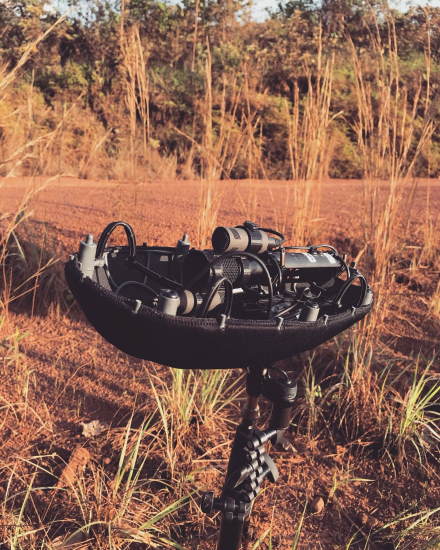
Whilst studying at Edinburgh University to gain a degree in sound design, George also worked on projects for clients. He was excited to be working in the field he loved, but the workload resulted in 100-hour weeks. “I was burned out and I wasn’t creative anymore,” he says. “The best way for me to fix that was to take a month off in winter.”
Vlad returned to his native Romania, hired a car and disappeared into the mountains. “I did sound recording and photography. I didn’t know what I was doing, I was just trying things and getting away from notifications, from having to reply to clients all the time and all the stuff in my mind. After a month of doing that, my creativity had returned, and I swore to myself that I would never forget about mental wellbeing and my own time.”
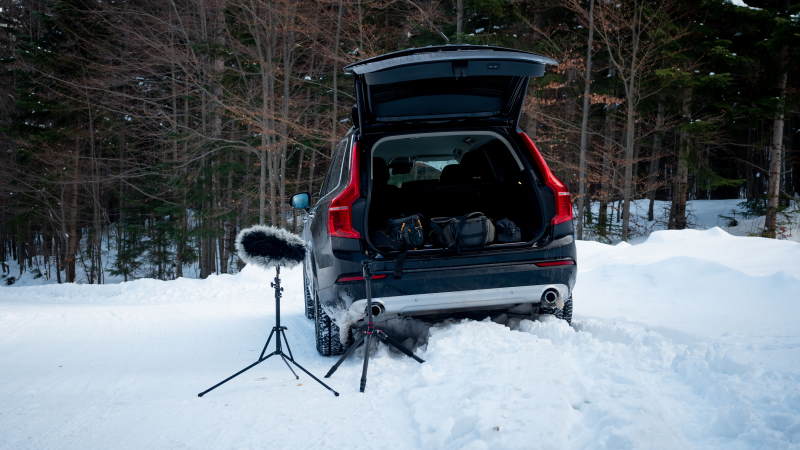
From there things developed organically, with Vlad starting to explore new places like Sweden and Norway. Then, in 2016, he was offered an artist’s residency South Africa. “I did a lot of sound recording there,” he recalls. “Then I started to organise my own expeditions to Africa, South America, Asia. It never felt like I had to do any of this; I was always excited about it and started to build on that.”
The result is that the Surrey-based 36-year-old now specialises in exploring and recording the beauty of our planet’s most remote places, and clients globally utilise Vlad’s self-funded services and sounds. Hollywood film studios, game development studios and production companies like Netflix license his content.
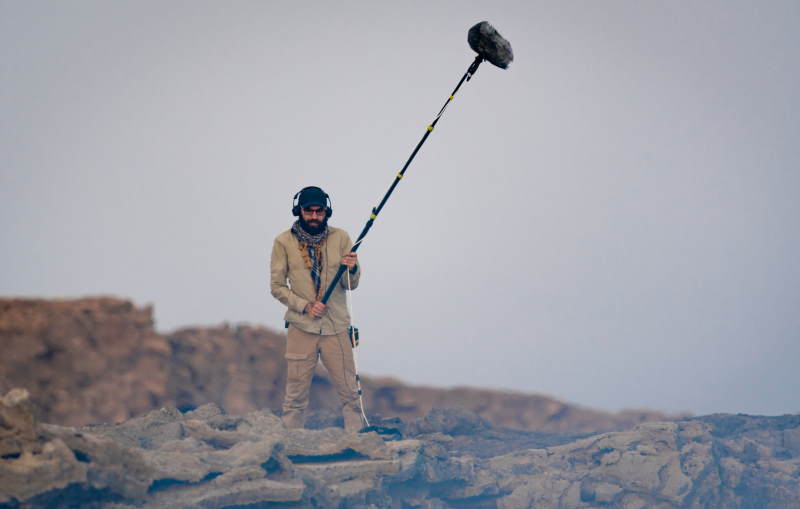
“I was recording the sounds of the Erta Ale volcano in Dallol, Ethiopia and it was a life-changing experience listening to the lava boiling with my Sennheiser MKH 8060,” recalls Vlad. “I was travelling with a group of guides, militia, police and porters. For them it was probably the 100th time at the edge of an active volcano, nothing special at all.
“I was asked, why I am recording this stuff? I passed over my HD 26 headphones to one of the locals and he was overwhelmed. Until then, they only knew the reflected sound of the volcano, but had never heard the direct sound of the caldera. One of them was so moved when hearing it for the first time he started crying.”

Vlad notes that heat is not the only limit he reaches when recording: “I was in Romania to record heavy winds in the mountains at night with two MKH 8040s and an MKH 30, but the wind almost disappeared and the temperature quickly fell way below freezing.” Sometimes the batteries of the recorder drain too fast or the knobs freeze, but he has never experienced any issues with his Sennheiser microphones “...in any outside conditions from -37°C to 49°C.”
Whilst location recordings often require innovative approaches, Vlad has a very unusual method of capturing in-the-wild surround sound: “My favourite rig to record with is four MKH 8020s, placed around a tree. It sounds a bit cheesy, but it gives me the perspective of the tree listening to the environment in 360 degrees. Of course, a tree doesn’t listen to anything. But if you think about the grooves and the texture of the bark, it’s something like head-related trans-reflection, like your nose, face and its contours. The sound bouncing round the tree colours it in a certain way. So listening from the tree’s perspective in the rainforest is my ultimate recording technique and I will use it whenever possible. The low noise floor, high build quality and excellent bass response of Sennheiser 8020s comes in handy when recording in the wilderness. And they perform exceptionally well in extreme humidity, especially when you look at the competition.”
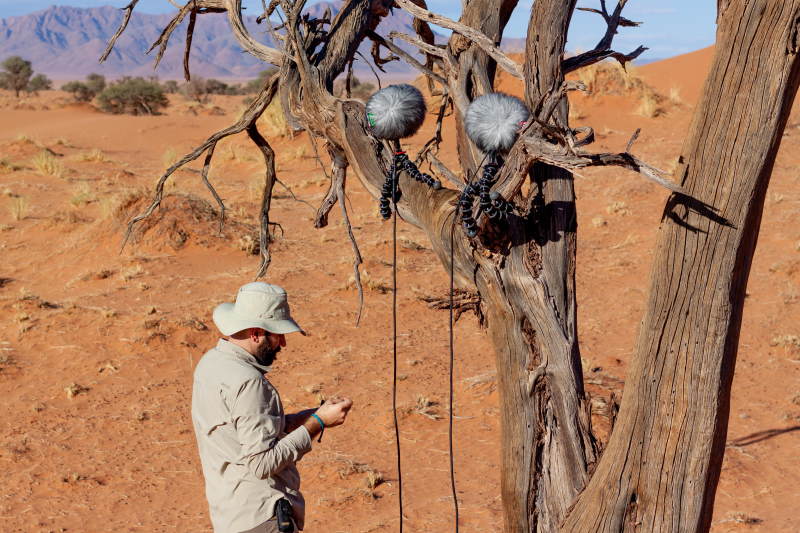
Vlad also shares his travel experiences and selected recordings with his social media community, giving hints and tips on techniques like making his rig as unobtrusive as possible so passing baboons don’t destroy it, or building a canopy of leaves, brush and twigs over his microphones in the rainforest to stop rain drops falling directly onto them to keep the sound more natural and retain the feeling of immersion. “I documented this on one of my early YouTube videos and a lot of people are doing it now,” he smiles. “They love the idea and I’ve heard way better recordings of rain. So, I’m really happy to be coming up with these sorts of tricks to facilitate good sound recordings.”
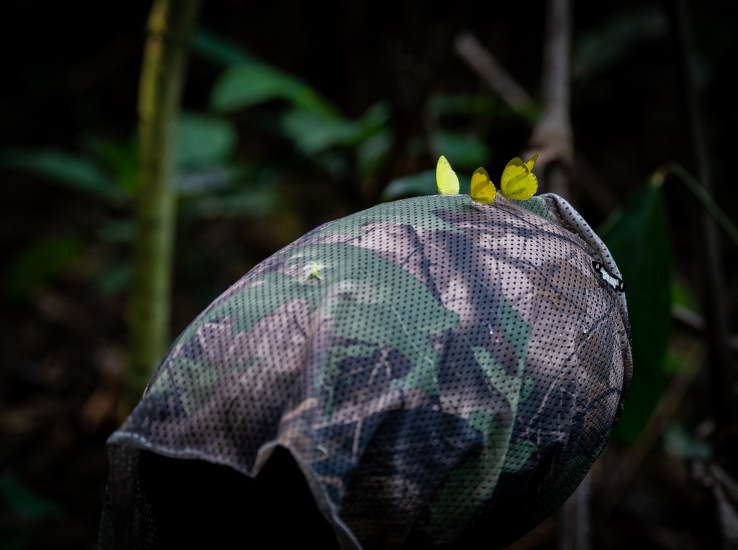
A great deal of time goes into planning of these exotic trips; Vlad does extensive risk assessments and has completed first aid and remote medicine courses to mitigate as much as possible. His expedition to Gabon, for example, took eight months of preparation, one month on location and up to six months of post-production. Seemingly no task is too challenging for Vlad however, such as travelling to the Congo by flying to Gabon and then continuing by car. “And hiring a car in Gabon is more expensive than buying it outright, but as a Westerner you are not allowed to buy a car or even drive outside the capital,” he says. “I’ve built my expeditions one on the other and very slowly pushed my comfort zone, so I’ve never been really far outside it. There have been situations where I’ve felt a little threatened. My friend and I were the only westerners in the Congo rainforest and sometimes the locals weren’t so excited for us to be there; we didn’t know the local mores, or social norms. But then I sometimes think it can be way more dangerous in Central London than in the Congo rainforest!”
Vlad’s forthcoming plans include a major expedition to Antarctica in 2022, which he has been planning since 2019, plus trips to Madagascar, Sumatra or Papua New Guinea. “It is rather difficult to find fixers locally, but I will try my best and will probably visit the country that eases its Covid restrictions first.”
Wherever that may turn out to be, his Sennheiser microphones will go with him.
 How to resolve AdBlock issue?
How to resolve AdBlock issue?